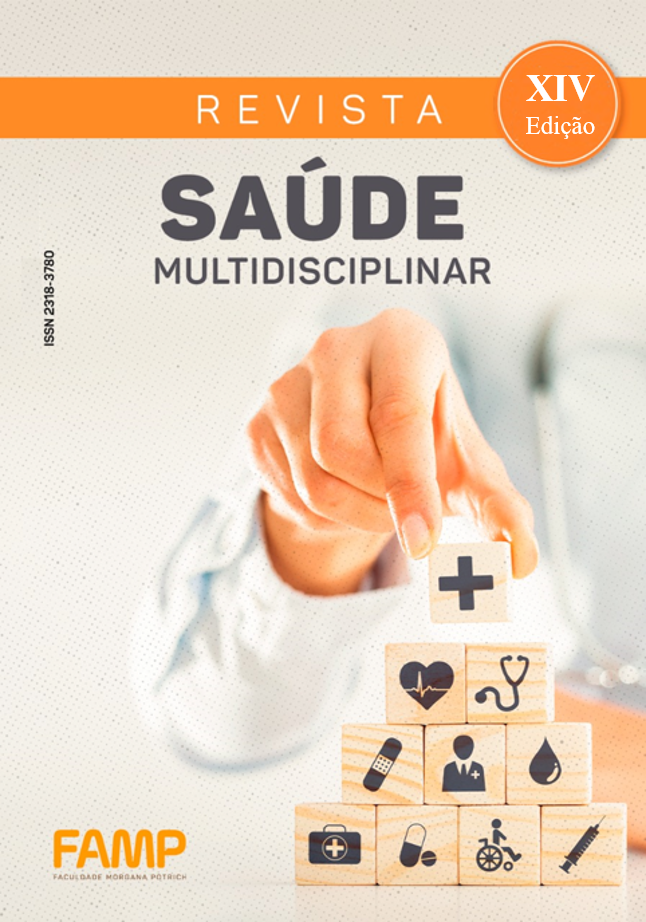THE EFFECT OF ELECTROSTIMULATION ASSOCIATED WITH EXERCISES TO STRENGTHEN THE ABDOMINAL MUSCULATURE FOR BALANCE GAIN: Case Report
DOI:
https://doi.org/10.53740/rsm.v14i1.618Keywords:
physiotherapy; electro-stimulation; tetraplegia; fortification.Abstract
Spinal cord injury is a neurological damage, where it affects the spinal cord and causes limitations in motor and sensory functions, the level of spinal cord trauma (SCI) can be considered total or partial according to the cervical segment. Tetraplegia consists of complete and incomplete, where it may or may not obtain a sensory or motor response below the level of the compromised lesion. OBJECTIVE: To develop a physical therapy treatment protocol in a patient with C5, C7 and C7 Spinal Cord Injury, functional quadriplegic with adaptations, through strengthening exercises in the abdominal muscles and functional electrical stimulation (FES). Having difficulty in balancing trunk and posture. METHOD: Were used for this case report were acquired by an evaluation through the databases: "Google Academic" and "PUBMED". The care proposed for the patient was assisted active therapeutic exercises, using materials to aid in the execution of the exercises in the sitting position without support and lying in the supine position. Gradually increasing the difficulty in agreement that the balance of the same was adapting to the exercise, such as: weights from 5 kg to 7 kg on the stick, and blindfolded. RESULT: We obtained few articles related to electrostimulation with an emphasis on strengthening the trunk for balance. CONCLUSION: In view of this study, the FES functional electrical stimulation associated with abdominal muscle strengthening exercises is effective to maintain the functional and structural capacity of patients with quadriplegia
References
-DE SOUSA, Samer Augusto et al. A Eficácia da Eletroestimulação Funcional Associada à Facilitação Neuromuscular Proprioceptiva em um Paciente com Lesão Medular. Ensaios e Ciência C Biológicas Agrárias e da Saúde, v. 22, n. 1, p. 17-21, 2018.
-ROCHA, A. S. et al. PERFIL FUNCIONAL DAS SEQUELAS DE LESÃO MEDULAR NAS DIFERENTES ETIOLOGIAS.2021.
-DE OLIVEIRA¹, Wallas Bomfim; PEREIRA, Vera Adelaide Fonseca. VERIFICAR A EFICÁCIA DA FISIOTERAPIA NA LESÃO MEDULAR–UM ESTUDO DE CASO. DOS SANTOS, Raulcilaine Érica et al. Relato de caso de paciente com tetraplegia incompleta e seu processo de reabilitação. ARCHIVES OF HEALTH INVESTIGATION, v. 10, n. 3, p. 505-508, 2021.
-ANDRADE, M.; GONÇALVES, SOFIA. Lesão medular traumática: recuperação neurológica e funcional. Acta medica portuguesa, p. 401-406, 2007.
-SOUSA, Natacha Fernandes de. O respeito pela autonomia da pessoa com tetraplegia completa em reabilitação pelos profissionais de saúde. 2017. Tese de Doutorado
-PETRY, Gabriela; DIETTRICH, Tiane Luana; BONAMIGO, Elenita Costa Beber. ATENDIMENTO FISIOTERAPÊUTICO EM PACIENTE COM LESÃO MEDULAR:UM RELATO DE EXPERIÊNCIA. Salão do Conhecimento, v. 7, n. 7, 2021.
-MACÊDO, Raquel Barbosa dos Passos. Programa de treinamento contínuo combinado com exercício resistido e seus efeitos sobre a capacidade física de adultos com lesão medular. 2020.
Additional Files
Published
How to Cite
Issue
Section
License
Copyright (c) 2023 REVISTA SAÚDE MULTIDISCIPLINAR

This work is licensed under a Creative Commons Attribution-NonCommercial-NoDerivatives 4.0 International License.









